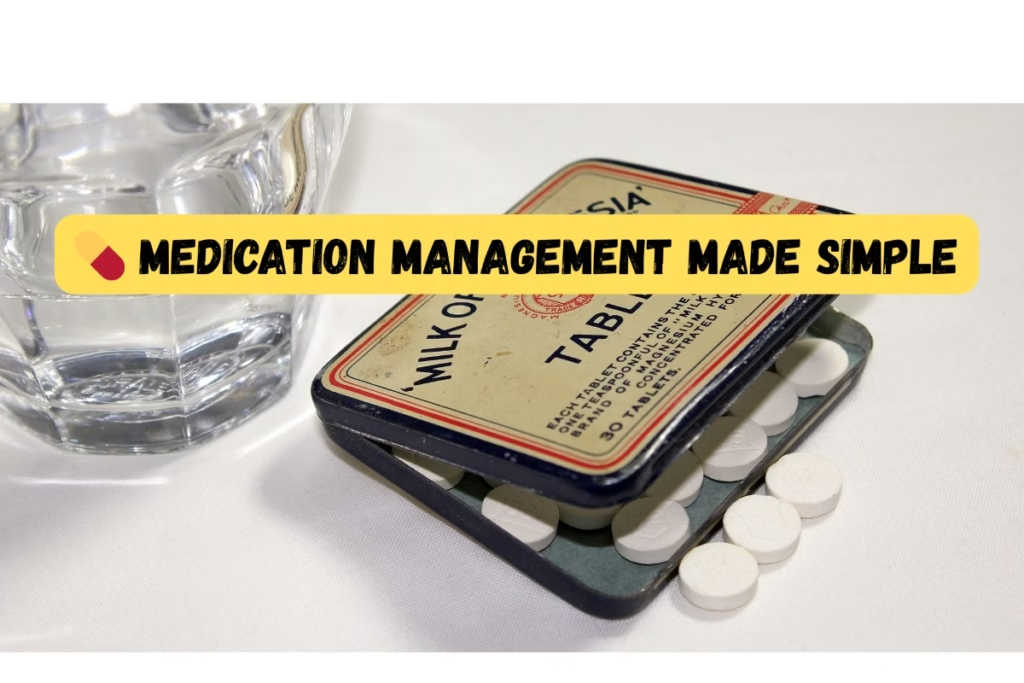Tackling incontinence challenges can be sensitive and complex for family caregivers. Effectively managing incontinence offers physical comfort and preserves the dignity of loved ones under their care. Establishing a considerate and informed approach is key to providing comprehensive caregiver assistance.
1. Core Challenges in Managing Incontinence for Care Recipients
A significant challenge in managing incontinence is understanding its diverse causes. This condition can stem from a variety of health issues, ranging from urinary tract infections and prostate problems in men to weakened pelvic floor muscles and hormonal changes in women. For some care recipients, neurological disorders such as Parkinson’s disease or complications from diabetes could be influencing incontinence. Caregivers need to recognize that incontinence may not be a standalone issue but rather a symptom of underlying health concerns that require medical attention.
Understanding the Causes of Incontinence
Determining the root causes of incontinence is vital for providing adequate care. Age-related changes, lifestyle factors, or medications can also play significant roles in the development of incontinence. It’s crucial for caregivers to closely monitor the health and behavior of care recipients, as early detection can significantly improve incontinence management. Depending on the cause, medical professionals may recommend pelvic floor exercises, dietary adjustments, or targeted treatments.
Psychological Impacts of Incontinence on Care Recipients
The psychological toll of incontinence on individuals can be profound. Often, care recipients may experience feelings of embarrassment, anxiety, and a loss of self-esteem. This emotional distress can lead to social withdrawal and a deteriorating quality of life. Caregivers must be empathetic and supportive, understanding that incontinence can challenge a person’s sense of dignity and independence.
Caregivers need to maintain a judgment-free environment and employ discretion when assisting with incontinence to help alleviate any sense of shame the care recipient might feel. The objective should be to support their emotional well-being while seeking solutions to manage the physical aspects of incontinence. By acknowledging and addressing physiological and psychological challenges, caregivers can help their loved ones or care recipients maintain a better quality of life while managing this delicate condition.
2. Strategies for Managing Incontinence
Establishing a Routine for Incontinence Care
One of the fundamental steps in managing incontinence is to create a consistent routine. For caregivers, this means scheduling regular bathroom breaks for the individual in their care. These predetermined times can help preempt accidents and promote a sense of security for the caregiver and the loved one. Setting up a routine that accommodates the body’s natural rhythms can help decrease the frequency of incontinence episodes.
Additionally, being mindful of fluid intake throughout the day—while ensuring adequate hydration—is also crucial for maintaining the effectiveness of the care routine. Avoiding caffeine and alcohol, as they can exacerbate symptoms, is a small yet significant dietary modification that can be incorporated into the routine.
Choosing the Right Absorbent Products
Selecting appropriate absorbent products is crucial in managing incontinence. This includes understanding the different types and absorbency levels available. This choice directly impacts the individual’s comfort and dignity. Factors such as the individual’s mobility, the severity of incontinence, and personal preferences must be considered. Options include disposable pads, reusable undergarments, and bed protectors.
Caregivers should monitor the performance of these products and make adjustments as necessary to find the most reliable and comfortable solution. Effective products can help prevent skin irritation and reduce the risk of incontinence-associated dermatitis.
Implementing Diet and Lifestyle Modifications
Modifying diet and lifestyle is a proactive approach to managing incontinence symptoms. In some cases, reducing or eliminating bladder irritants like caffeine, acidic foods, and spicy meals can significantly alleviate discomfort. Increasing fiber intake can also minimize the chances of constipation, which can put pressure on the bladder.
Furthermore, maintaining a healthy weight through regular exercise can relieve pressure on the pelvic floor muscles, thus improving incontinence. Kegel exercises can also be beneficial for strengthening the pelvic floor. Encouraging these practices can empower individuals and give them greater control over their symptoms.
In the journey of incontinence care, continuous support, compassion, and the willingness to adjust strategies are pivotal in enhancing the quality of life for those affected.
3. Tips for Caregivers to Provide Support with Dignity
Maintaining Privacy and Respect During Incontinence Care
Caring for a loved one who is dealing with incontinence requires a compassionate approach that prioritizes their dignity. Ensuring privacy is paramount. Whenever assisting with personal care tasks, close doors or use curtains and cover your loved one with towels or blankets, exposing only what is necessary. Such sensitivity to their exposure can significantly reduce feelings of embarrassment and help maintain their sense of self-respect.
It is also important to acknowledge the feelings of the person in your care. Simple actions, like knocking before entering a room or asking for permission before starting care tasks, can make a significant difference. By treating incontinence as a standard medical issue rather than a personal failing, you can help lift any unnecessary shame they may feel. Provide reassurance and normalize the situation as much as possible, affirming your unconditional support.
Communication Techniques for Sensitive Topics
When discussing incontinence, choose your words carefully and be mindful of your tone. Communicating clearly and sensitively is beneficial, as is avoiding language that may be perceived as patronizing or judgmental. Start the conversation by expressing your willingness to help and understand, clarifying that your goal is to assist them in managing the condition with dignity.
Listening is just as critical as talking. Allow your loved one to express their preferences and concerns. Acknowledging and including their feelings in decision-making can empower them and foster a sense of control and ownership. When guiding the management of incontinence, offer choices rather than directives, allowing individuals to maintain autonomy over their care and routines.
Incorporating these mindful practices into incontinence care helps build a trusting relationship. Ultimately, managing your loved one’s emotional well-being is just as essential as managing the physical challenges of incontinence. By approaching this sensitive issue with respect, empathy, and open communication, you will provide the most supportive care possible.
4. Professional and Community Resources for Incontinence Management
Navigating Healthcare Assistance for Incontinence
Dealing with incontinence can be challenging, not only for those experiencing it but also for family caregivers tasked with managing this sensitive issue. Finding the right healthcare support is critical in caring effectively for a loved one with incontinence. Caregivers should start by consulting with their family member’s primary care physician. They can provide guidance, assess the need for specialist referrals, and may suggest a urologist or geriatrician who can offer targeted treatment plans and advice.
Medicare or private insurance might cover some therapies and incontinence supplies, so it’s essential to understand the coverage details. It is also worth exploring whether community health centers or local public health departments offer programs to assist with the costs of incontinence products or provide access to discounted items.
Utilizing Support Groups and Online Forums
Sometimes, emotional and informational support from peers can be just as valuable as medical advice. Joining support groups where fellow caregivers share their experiences can help manage the psychological aspects of caregiving. These groups can be found through local hospitals, senior centers, or organizations focused on aging.
Additionally, online forums can be a treasure trove of support. Platforms such as the National Association for Continence (NAFC) or the Simon Foundation for Continence provide spaces for caregivers to exchange tips, coping strategies, and moral support. Through these resources, caregivers can stay informed about the latest products and treatment advances, as well as learn about legislative advocacy opportunities related to incontinence care.
When navigating the complexities of managing incontinence, remember that many professional and community resources are available. By leveraging these resources, family caregivers can ensure they provide the best care possible while also taking care of their own well-being.
5. Staying Informed: Advances in Incontinence Care
Emerging Treatments and Technologies in Incontinence Care
Incontinence care has seen remarkable advancements, offering hope and improving the quality of life for individuals with this condition. Emerging treatments have become more sophisticated, including the development of new medications and minimally invasive surgeries. Implantable devices that help regulate bladder function are among the technological innovations transforming the management of incontinence. Moreover, advancements in biofeedback and electrical stimulation therapies can be tailored to an individual’s specific needs, enhancing muscle control and bladder support.
On the technology front, innovative products and mobile applications are now available to help track incontinence episodes, enabling patients and caregivers to understand better and manage the condition. These tools can also remind users about exercises and medication schedules and offer support from a larger community of individuals navigating similar health concerns.
Continued Education for Caregivers on Managing Incontinence
Family caregivers must stay abreast of the latest information and strategies for managing incontinence. Many organizations offer resources and educational materials to guide caregivers through the complexities of incontinence care. This ongoing education can help caregivers identify signs indicating a need for a modified care plan or medical intervention, ensuring the individual’s health is diligently monitored.
Workshops, online courses, and support groups are valuable for acquiring new skills and knowledge related to incontinence management. They offer practical advice and emotional support, which can be just as important. Caregivers learn about effective communication techniques, dietary considerations, skincare, and strategies for maintaining dignity and independence in patients with incontinence.
Understanding the advancements in treatments and the importance of continued education is crucial for caregivers and individuals affected by incontinence. This ongoing process significantly contributes to comprehensive care and enhances the well-being of all involved.
Noteworthy Consideration: Effective management of incontinence extends beyond physical care; it encompasses emotional support, dignity, and a gentle approach that respects the sensitive nature of the condition. For caregivers, being equipped with the right knowledge and resources can transform this challenging aspect of care into an opportunity for deepening compassion and trust.


